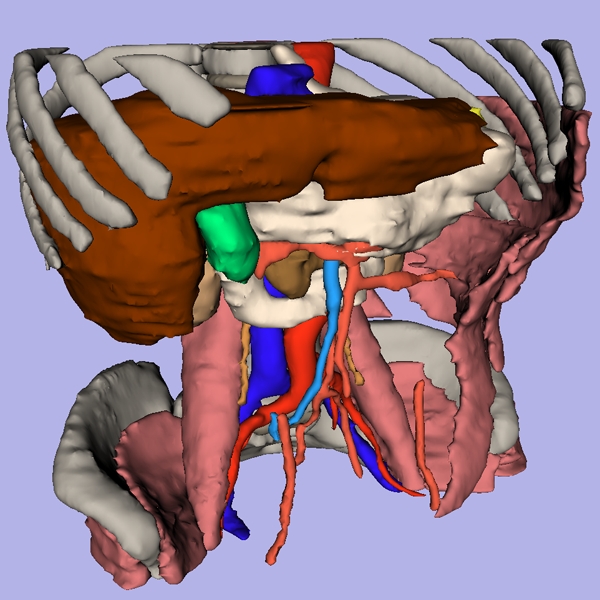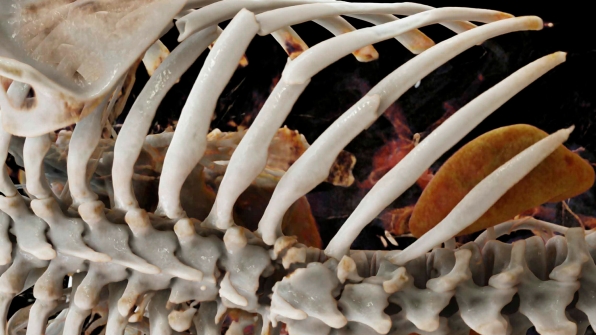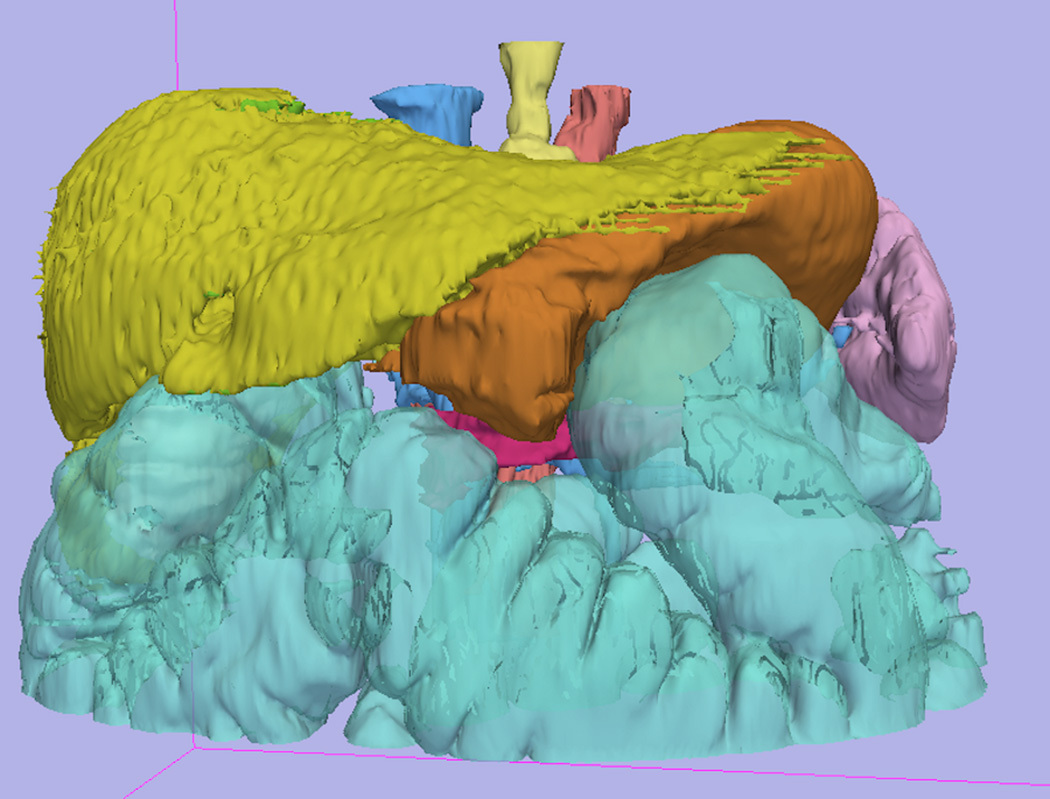[moving] image
sound
txt
"scenes" for a pataphysic mov(i)e:
other stuff, notes
Scene: Introduction
Scene: (aftermath of) the probable: measure / image / calculation / averaging / estimation
Scene: segmentation / tomos / slicing
Scene: somatopologies | inside + outside/surfaces
so-called bodies / political fictions that are alive
volumetry / 3D technoecologies
possible-probable tensions
In computational technologies, we find the probable often disguised as the possible. It means that we are presented with exciting features such as endless zoom, infinite resolution and zillions of parametric variations. But more often than not, it means that the conditions for what is possible, are actually fixed.
This is eqully the case in biomedical imaging. It creates powerful political fictions that provoke merely technocratic understandings of so-called bodies.
I think it is is urgent we invest and infest/invest these complicated spaces with feminist energies.
Explaining this image + title
making invisible insides visible
Biomedical imaging today centers around a group of techniques called Tomography, where ‘tomos’ means slice. Tomography is not limited to the imaging of the insides of human bodies, the same technology is used in a mining context for example, or to visualise the geometries of the galaxy.
It sits in the middle of a booming industry that entangles hardware, software, flesh, bone, radiation, data-processing and the management of it all.
The point of tomography is to obtain stacks of 2-dimensional graphs that record the total density values of a volume at a certain time and place. If you project these 2D images back on top of each other, a pattern will start to appear. It is this reverse-engineered, computed pattern that forms the basis of most biomedical imaging today.
Data-acquisition can be done in different ways. CT / Computer Tomography uses multiple xray-exposures, PET-scans / Positron-emission tomography are read from radioactive tracers that a subject has swallowed, and MRI Magnetic resonance imaging uses strong magnets and measures the difference in speed between activation and dis-activation of the atoms that the magnet excited. However, the process of reconstructing, rendering, and navigating the data is always the same. Stacks of renderings are dealt with in software environment where medical image informatics, image processing, and three-dimensional rendering can take place.
Hospitals buy such software environments usually in conjunction with expensive hardware. In research environments the reliance on clinically approved hardware is less pressing, so some of the work happens through Open Source platforms such as 3D-Slicer. It is through this door into the world of biomedical imaging that we are trying to understand the different processes at work.
With all its claims to having a causal relation between the matter that the tomographic technology interacts with, and the resulting images, it is important to remember that these invisible inside are litterally made visible. They are reconstructions, generative renderings. They are super virtual: calculated outcomes of a non-invaded interior.
reversing the feminist occupation with visibility -- introducing the oblique
shiny bones, cinematic rendering
Tomography is seen as “non-invasive imaging” – so no physical operations are needed to render the inside of a matter constellation accessible.
On the surface, tomography thereby breaks with the anatomical tradition of ‘dissection’ that meant that the condition for looking would be the death of the subject. Here, so-called bodies can be accessed in-vivo, and re-rendered on the fly.
But the tradition of dissection invades non-invasive imaging through the back-door. Each tomographic rendering is the result of a series of interrelated operations of separation and cuts.
First of all, the invisible insides are rendered as a dataspace, so they can be "fully" accessible to vision, navigation and instrumental intervention. They have become readable and eventually writable for further processing.
Now, the traditional ‘saggital’, ‘coronal’ and ‘axial’ anatomical planes can be automatically registered to the X, Y and Z axis of the Cartesian paradigm. The anatomical perspective fits 3D-modelling perfectly.
What follows is the application of image segmentation, a set of standard techniques in computer vision to algorithmically separate useful bits and pieces of images from each other. When radiologist use segmentation, they mean visually discerning anatomical elements.
The discipline of radiologists, maybe apart from insurance companies, embraces machine learning with much enthusiasm. There is the hope to automate more of the processes of segmentation, like in the automated detection of tumors for example.
So-called deep-learning techniques are used for the automated enhancement of images. The idea is to arrive at greater resolution without the need to increase radiation doses.
These hallucinatory techniques where information acts upon information, are firmly kept in check by pre-established differentations between what counts as healthy or sick, as human or machinic, as in or out of place.
Automatically demarcating tissue types at the level of single pixels and voxels, results in clearly marked volumes and structures, and absolute divisions between organs, bones and tissues that of course, here again, neatly follow the anatomical canon. It all works together to produce renderings with a sense of mathematical precision and medical evidence.
Tomography takes the risk to reduce so-called bodies to their individual matter constellation. Separated from the machinery around them, they are moveable but divorced from their own rhythms, rendered without attachments or complications and most important of all, with minimal agency. Being and becoming is brought back to the uncontestable promise of wholeness-at-the-end-of-the-scanner's-tunnel.
[the paradigm of tomography determines or confirms or produces a regime of inside-outside]
[moving] image
sound
txt
other stuff
[moving] image
sound
txt
other stuff, notes
[moving] image
[moving] image
sound
txt
other stuff, notes
sound
txt
Scene: The Possible (open ended end)
[moving] image
sound
txt
other stuff, notes
Scene: The Possible (open ended end)
[topological surfaces that build/contain/hold a political fiction]
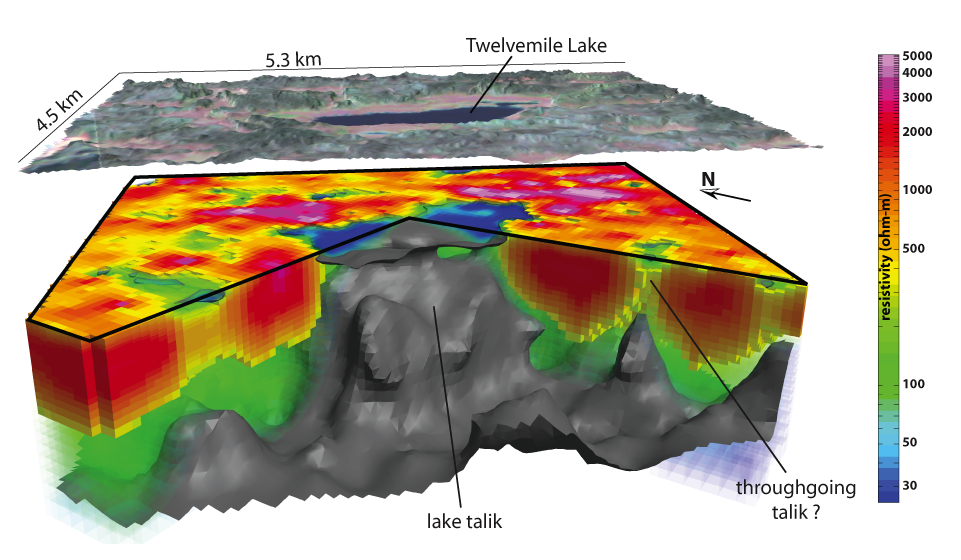
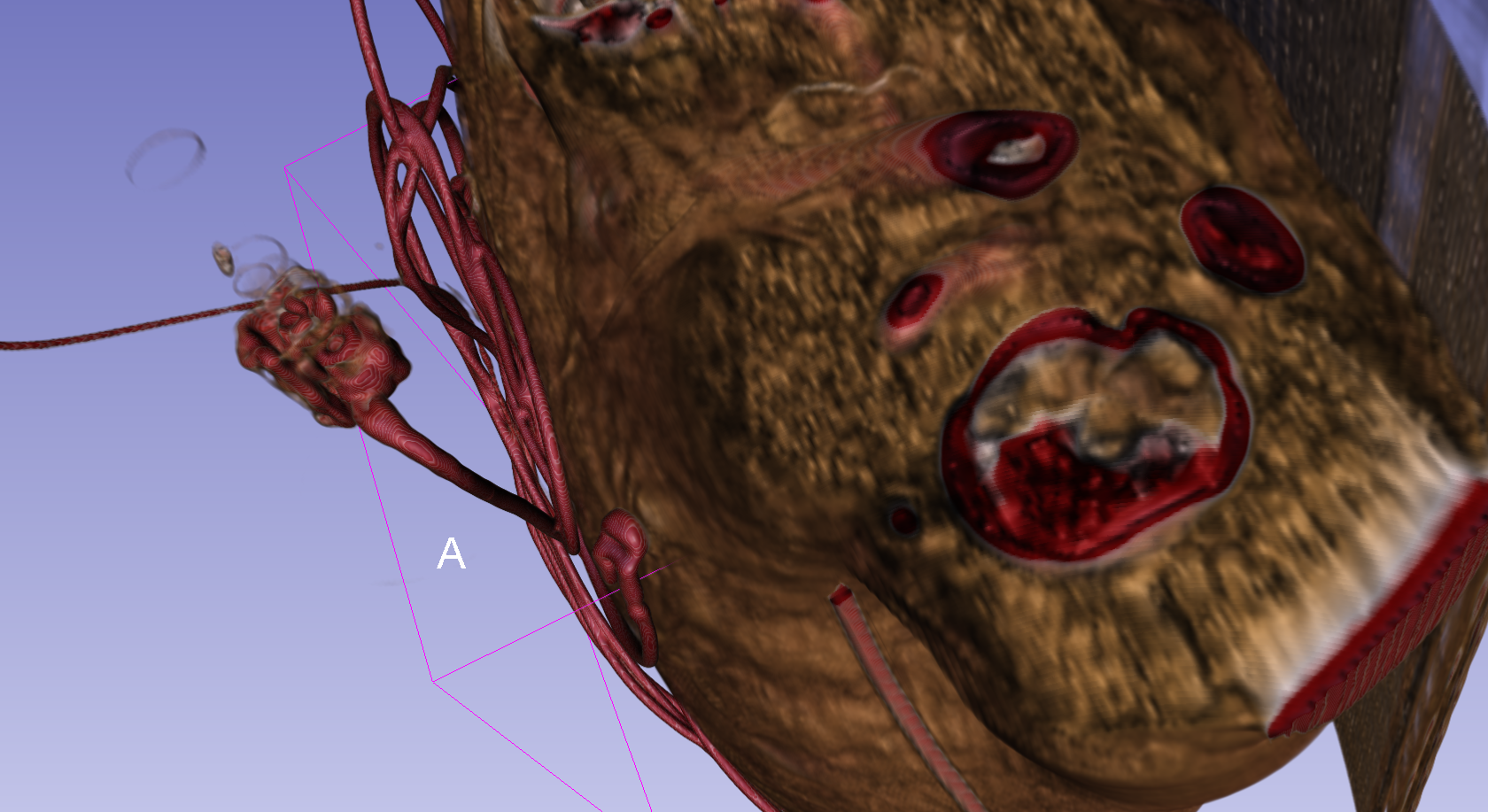
The probable and the possible | political, aesthetic, ethic implications
The volumetric calculations that are responsible for the political fiction of these so-called bodies are infused with the modern heritage of perspective, of anatomic science and its classifications, and of optimisation and efficiency through computer science. Biomedical imaging promises endless possibilities of vision, but how to open its up for questioning its stable categories?
The fictional character of all of this is hard to argue for when so many regimes of truth and forms of validation are asserted. But with feminist techno-sciences we have learned to insist on problematising modern regimes, and the impossibilities for life they produce.
Automation here is used to construct a sense of objective truth, of real bodies that result from non-intentional, non-invasive vision. When joined with the normative-generative features of machine learning we know we need to pay careful attention; especially when all of this operates within an industry that depends on seamless separation.
It is difficult to know who, where and how to ask about implications. There are computer scientist working on computer vision, there are engineers developing hardware, there are mathematicians optimizing calculations, there are medical professionals clinically validating the images, and subjects demand the confirmation of their condition through imaging. All these elements legitimate and re-enforce each other, composing probabilities and path dependencies.
So, my question for you is how to participate in the reading and framing of the paradigms that manage and organise these techno-political systems, without missing the opportunity of rethinking conventional arrangements of nature-culture, and of our own implication in these modes of efficiency and worlding.
